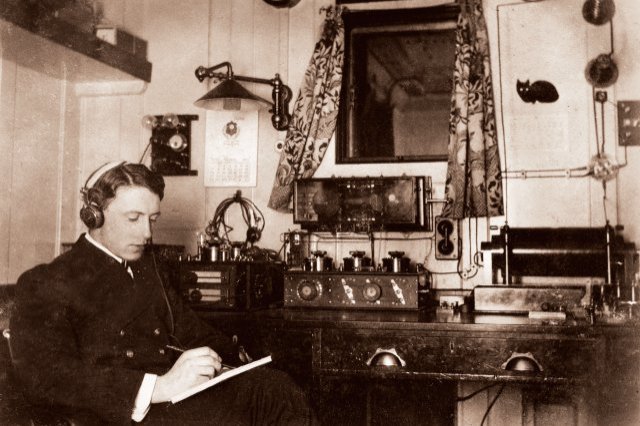“Wireless Communications on the HMS Titanic: A Lifeline in the Face of Disaster”
Wireless communications on the HMS Titanic played a crucial role in the emergency response to the ship’s sinking on April 15, 1912. The ship was equipped with a Marconi wireless telegraph, which allowed passengers and crew to send messages to shore and to other ships in the area.
At the time of the Titanic’s voyage, wireless telegraphy was still a relatively new technology, and the Marconi Company was the leading provider of wireless communication systems for ships. The Titanic’s wireless operator, Jack Phillips, was highly skilled and had a reputation for being one of the best in the business.
As the Titanic began to sink, Phillips and his assistant, Harold Bride, worked tirelessly to send out distress signals and to communicate with other ships in the area. They sent multiple messages, including the famous “CQD” (Come Quick Danger) and “SOS” (Save Our Souls) signals, which were recognized internationally as calls for help.

Marconi Room on the Titanic’s sister ship the Olympic.
In the early hours of April 15, the Titanic’s wireless signals were picked up by the nearby SS Californian, which had stopped for the night due to ice conditions. The Californian’s wireless operator, Cyril Furmstone Evans, received the Titanic’s distress signals but did not consider them to be urgent and did not pass them on to the ship’s captain. As a result, the Californian did not respond to the Titanic’s calls for help.
Despite this tragic miscommunication, the Titanic’s wireless system was able to reach several other ships, including the RMS Carpathia, which ultimately rescued many of the survivors. The Carpathia received the Titanic’s distress signals at around 12:30 AM and immediately began to steam towards the sinking ship. The Carpathia arrived on the scene at around 4:00 AM and was able to rescue 705 of the Titanic’s passengers and crew.
In addition to its role in emergency response, the Titanic’s wireless system also played a crucial role in the communication of information about the disaster to the outside world. As news of the sinking spread, the Marconi Company’s wireless station at Cape Race, Newfoundland, became a hub of activity, with reporters and family members of passengers trying to get updates on the situation.
Overall, the wireless communications system on the HMS Titanic was a vital tool in the emergency response to the disaster and played a crucial role in the rescue of many passengers and crew members. However, the tragedy of the Titanic also highlighted the limitations of the technology at the time and the need for improved communication systems in the future.

